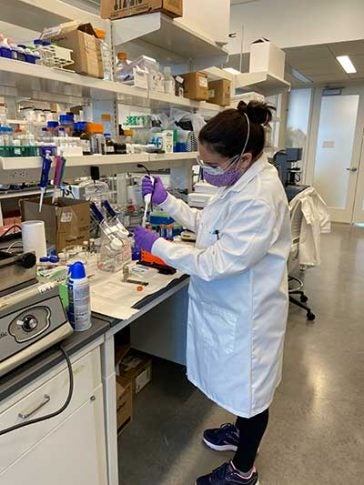
One of the biggest challenges facing research and regulation of poly- and perfluoroalkyl substances (PFAS) is the limited amount of data about how they interact with different organisms. Although PFAS have been linked to adverse health outcomes, the research community does not have a strong understanding of how they transport and distribute through the human body to lead to these effects. PFAS are known to bind to albumin proteins, the most abundant proteins in the bloodstream, which carry the pollutants throughout the body.
Building upon prior work published in 2021 in the journal Chemosphere, STEEP trainee Jessica Alesio has employed two complementary techniques for measuring protein binding—fluorescence spectroscopy and equilibrium dialysis—to research PFAS binding mechanisms and to broaden the range of available protein binding data. Alesio also used different analytical techniques and mathematical binding models to address discrepancies between reported PFAS binding data and to differentiate between specific and non-specific modes of binding. Along with STEEP researchers Dr. Angela Slitt and Dr. Geofrey Bothun, Alesio is now developing rapid binding assays that can screen a wide range of temperatures and examine how PFAS binding might compete with the natural function of albumin proteins within the body – the sequestration and transport of fatty acids and cellular metabolites. The specific way by which different PFAS bind to a protein can help other researchers as they develop predictive models related to PFAS transport within the body.
A manuscript of this work is currently in review at the journal Chemosphere.

